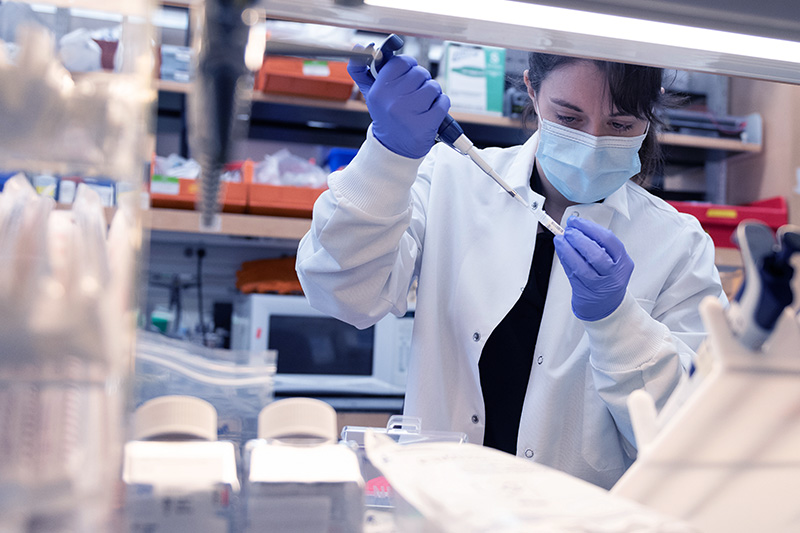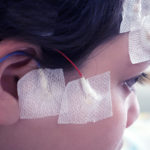Making genome sequencing a first-line test in rare disease

Children with rare diseases often undergo years of medical visits and genetic testing before they get a diagnosis. Over the past few years, clinics have started to embrace exome sequencing as a first genetic test, skipping time-consuming testing of individual genes and gene panels and getting to a diagnosis faster.
But exome sequencing doesn’t always provide answers. Some centers add a chromosomal microarray test, which can pick up changes that exome sequencing can’t detect. Now, a study in The New England Journal of Medicine makes a strong case for cutting to the chase and using the best current tool we have: genome sequencing.
Costs of genome sequencing are coming down enough to bring it within clinical reach. But until now, its added diagnostic yield hadn’t been spelled out. Study leaders Monica Wojcik, MD, MPH, director of the Neonatal Genomics Program at Boston Children’s Hospital, and Anne O’Donnell-Luria, MD, PhD, attending physician in the Division of Genetics and Genomics, hope their findings will change practice.
“The benefits of genome sequencing over exome sequencing have thus far been unclear,” says Wojcik. “This study fills that evidence gap and will hopefully settle the question.”
What genome sequencing can reveal
Exome sequencing covers the portions of the genome that code for proteins. But the exome represents less than 2 percent of our DNA. It leaves out vast segments that have regulatory activity, influencing the coding genes and the proteins made. Studies have increasingly linked variants in these non-coding segments to disease. Moreover, even in coding genes, exome sequencing can’t pick up certain kinds of variants.
“Clinicians have been unclear as to which to choose,” says Wojcik. “Part of the problem is a lack of stringent head-to-head comparisons of genome versus exome sequencing in large, phenotypically diverse cohorts.”
The investigators first analyzed a research cohort of 744 families with previously negative genetic testing results (mostly exome sequencing). These families came from the Broad Center for Mendelian Genomics, part of the National Human Genome Research Institute’s GREGoR Consortium.
Overall, 218 families (29 percent) had diagnostic findings on genome sequencing. Of these, 28 percent had variants that couldn’t have been found without genome sequencing. Of the families with previous negative exome sequencing results, 64 percent had variants that could have been identified by reanalyzing those results, the researchers found.
“This suggests that we should be using genome sequencing more, both as a first-line sequencing method and for patients who have a prior negative exome,” says O’Donnell-Luria.
Overall, of the original 744 families, 8 percent received an answer from genome sequencing that was otherwise unobtainable. Intriguingly, researchers in Germany tested a second group of 78 families in their clinics and found the same 8 percent. “That makes us more confident that it’s a general principle we’re finding,” O’Donnell-Luria says.
Specific findings unique to genome sequencing included variants deep within non-coding regions, small insertions and deletions, reversed or repeated DNA segments in coding genes, and complex chromosomal rearrangements.
Revising practice
Wojcik and O’Donnell-Luria hope their study will encourage other clinicians to use — and insurance to cover — genome sequencing as a first-line test for patients with rare diseases. While costs and payer reimbursement vary, the incremental cost of genome versus exome sequencing is not substantial and can save money by avoiding the need for other testing.
The study also reminds us that genome sequencing still leaves some patients without answers. Some pathogenic variants can’t be easily recognized in the sequencing data, or may require a different technology, like long read sequencing, to capture them, O’Donnell says.
The insights of clinical geneticists can be critical to finding a diagnosis, helping to determine whether a variant found on sequencing is a plausible cause of disease. Wojcik and O’Donnell-Luria, both clinical geneticists themselves, often went back to the referring clinicians to request additional information about patients’ symptoms and presentation. They also got valuable clues from families that helped them interpret the genetic data.
“That’s one thing that took a long time with this project,” says Wojcik. “There was a lot of careful investigation and phenotyping.”
O’Donnell-Luria, Abou Jamra, and Heidi Rehm, PhD, of Massachusetts General Hospital and the Broad Institute, contributed equally to this article.
Learn more about the Neonatal Genomics Program and the Division of Genetics and Genomics at Boston Children’s Hospital.
Related Posts :
-

Two rising stars in kidney genetics: Nina Mann and Amar Majmundar
A healthy, functional kidney must maintain a delicate balance of water, nutrients, and electrolytes so it can properly filter the ...
-

A path forward for genetic testing in unexplained epilepsy
The number of genes implicated in epilepsy has grown rapidly in the past decade. This raises questions about what tests ...
-

When diagnosis is just the first step: The Brain Gene Registry
Through advances in genetic sequencing, many children with rare, unidentified neurodevelopmental disorders are finally having their mysteries solved. But are ...
-

Using genetics to glimpse newborns' future with congenital heart disease
Aside from infections, congenital heart disease (CHD) is the leading cause of infant mortality. Informed by babies she sees in ...





